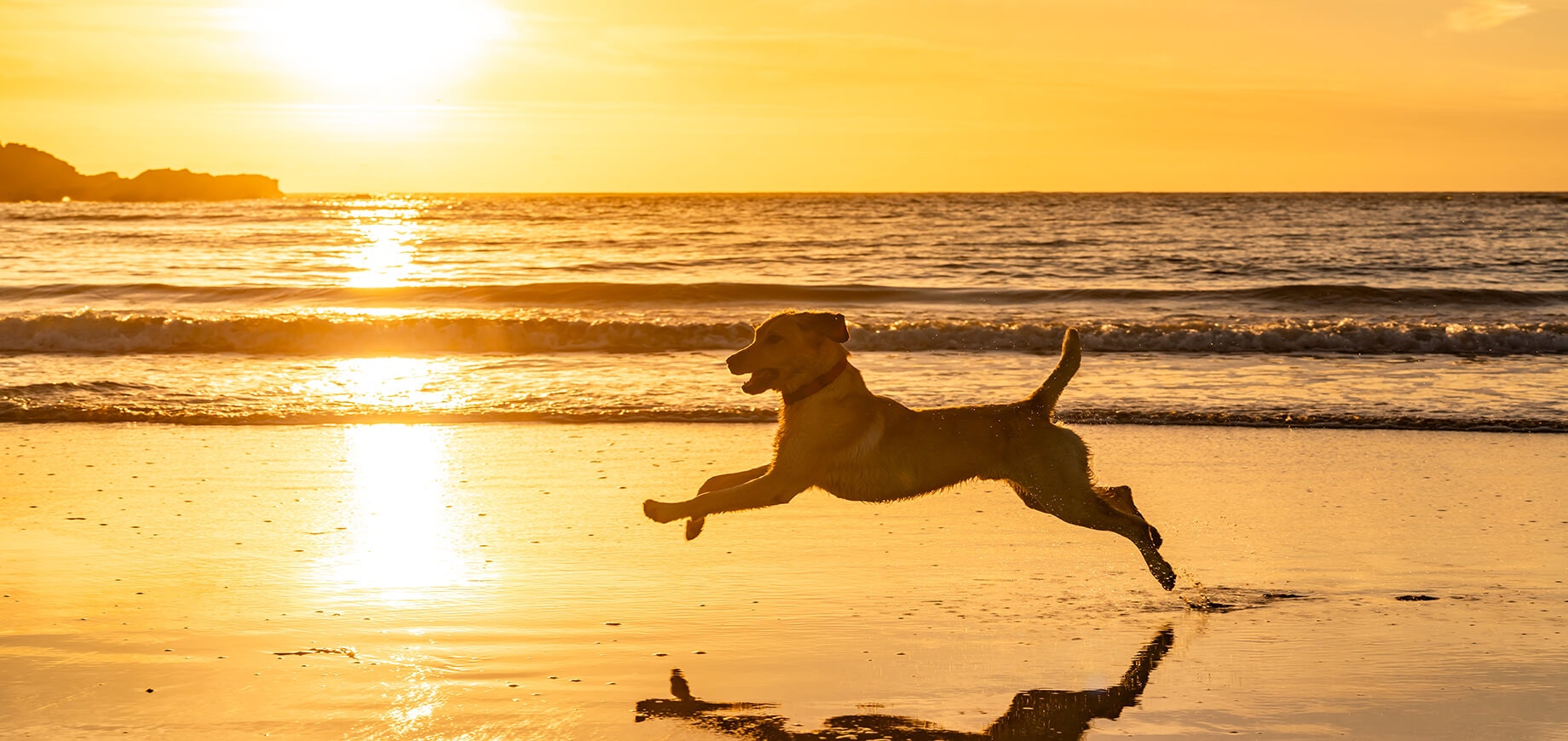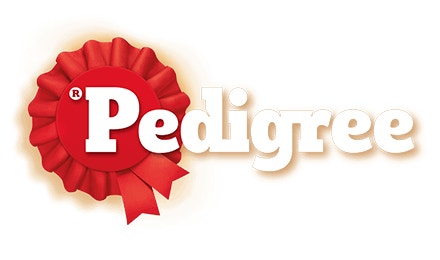

Have you ever wondered why your dog suddenly gets a burst of energy and starts dashing about like a pooch possessed? Known to the experts as ‘frenetic random activity periods’ (FRAPs), but to pet parents as the ‘zoomies’, it’s a common phenomenon in both puppies and adult canines, and is sometimes accompanied by jumping, running in circles and barking.
But exactly why do dogs get the zoomies, and why do dogs zoom after bathtime? In this article, we’ll look at common causes of this boisterous behaviour - such as when dogs are excited, feeling stressed or simply need to release some pent-up energy - to help owners understand the behaviour in order to safeguard their pet’s safety and support their wellbeing.
There are several causes of a dog’s sudden show of speed and excitable antics, which can range from expressing joy to being over-stimulated or even responding to feelings of stress. Here are some of the common triggers for dogs to start zooming, which can be down to both physical or psychological causes.
Many pet parents may notice it happens if their dog has been cooped up on a rainy day, on a long car journey, or if they’ve missed their usual walk. Dogs might seek a sudden burst of speed and agility to release unspent energy, or if they’ve been under-stimulated. Other owners note that it happens before bed time, if dogs are over or under-tired, or after eating when they’re ready to burn some of those nutritious calories they've just enjoyed.
It’s worth noting that vets recommend avoiding sudden bursts of energy after eating, particularly for deep-chested breeds, for around 15 to 20 minutes after a meal. If your dog loves to zoom after eating, aim to set a calm, restricted routine around feeding time to give them a bit of quiet time after dinner.
Some dogs love to zoom when they’re happy, exhilarated, playing, or in anticipation of something fun about to happen. They might zoom to celebrate your return from work, if they’re out walking in their favourite open space, spot a familiar playmate, or if they’re overjoyed at a particularly exhilarating game. Your dog’s emotional response to happiness and excitement can be to leap and run about, enjoying their freedom, or celebrating the attention from their favourite people.
Although some dogs may be calm and relaxed after bathtime, others get a little overstimulated. Some experts believe dogs may feel relief after bathing, which can cause their sudden bursts of energy, whilst others observe it as a practical response to want to dry off from excess water, or even get rid of a new or unfamiliar scent.
Dog anxiety can show itself in several ways, but some dogs’ responses will be to run frantically around to try to relieve themselves of unwanted feelings of stress, fear or nervousness. Zoomies can be a physical response to adrenaline, being over-stimulated or feeling frustrated. If your dog starts to zoom after being stressed, or does the opposite and hides away or refuses to walk, read about ways to manage a stressed dog to help support them.
We’ll skip the gory details, but the feeling of relief for your dog after they’ve done their business can make them feel elated, which may make them zoom. In a practical sense, it can also help them to get away from the droppings, to avoid leaving a scent for potential predators, as well as helping to shake themselves off to ensure a clean coat and paws.
For some dogs, zooming is a way to express happiness and euphoria, and lots of dogs love to do this as soon as they’re let off the leash. Although zoomies are commonly associated with excitement, play and having plenty of energy, different breeds of dog, as well as a dog’s age and personality type, can all play a part in how frequently they zoom.
But if it usually happens when dogs are happy, why do dogs do zoomies when they’re stressed, tired or unhappy? The answer is that zooming can help a dog to express emotion and release pent-up energy, which can sometimes be from a negative cause as well as a positive one. It’s important to observe your pet’s behaviour to avoid any negative triggers which may kick-off a zooming session which isn’t a celebration of contentment.
It depends on what triggers it. Zooming is a common way for your pet to express excitable emotions, particularly for puppies, and if they zoom because they’re happy, this is a fun and natural phenomenon. Joyful zooming can benefit a dog’s physical as well as mental health, but it’s important to make sure they’re doing it in a safe space away from roads, or in places which may put them at risk.
As long as your dog is zooming in a safe environment, away from anything that can hurt them and when they don’t put other people or animals at risk, you can enjoy the fun with them! Letting dogs zoom in dedicated open spaces, on dog-friendly beaches, or in an enclosed garden can help them let off steam and feel happy and relaxed. However, if there are cars around, young children who may get knocked over, or livestock present, you’ll need to curb their excitement and intervene by putting them on the lead and encouraging them to calm down. You can read more about 8 common behavioural issues and how to tackle them on the Pedigree blog.
Although zoomies tend to be joyous, sudden bursts of dashing around, running in circles or at an angle can be potentially hazardous - particularly if the ground is wet, uneven or unstable - and there’s a risk that your dog could injure themselves. Cruciate ligaments, located in the hind legs, can rupture or other soft tissue damage can occur. If your dog is overweight or a large breed, they are slightly more at risk, but this can happen to any dog, so it's probably best to keep them on a lead when uncontrollable zoomies are likely to occur.
When it comes to the zoomies, it’s important as a pet owner to understand why do dogs’ zoomies happen, and why do dogs get the zoomies both when they’re particularly happy as well as when they’re stressed. The usual reason why dogs zoom is down to pent up energy, commonly through excitement. Knowing the normal pattern of your dog’s behaviour can help so that you know when to expect the zooming to start, and so you can reduce any negative stimulus which may make them zoom in response to anxiety. Some dogs zoom more than others, and it isn’t always appropriate or controlled, of course, but seeing them safely frolic in sheer happiness can be one of the many true pleasures of being a pet parent.

